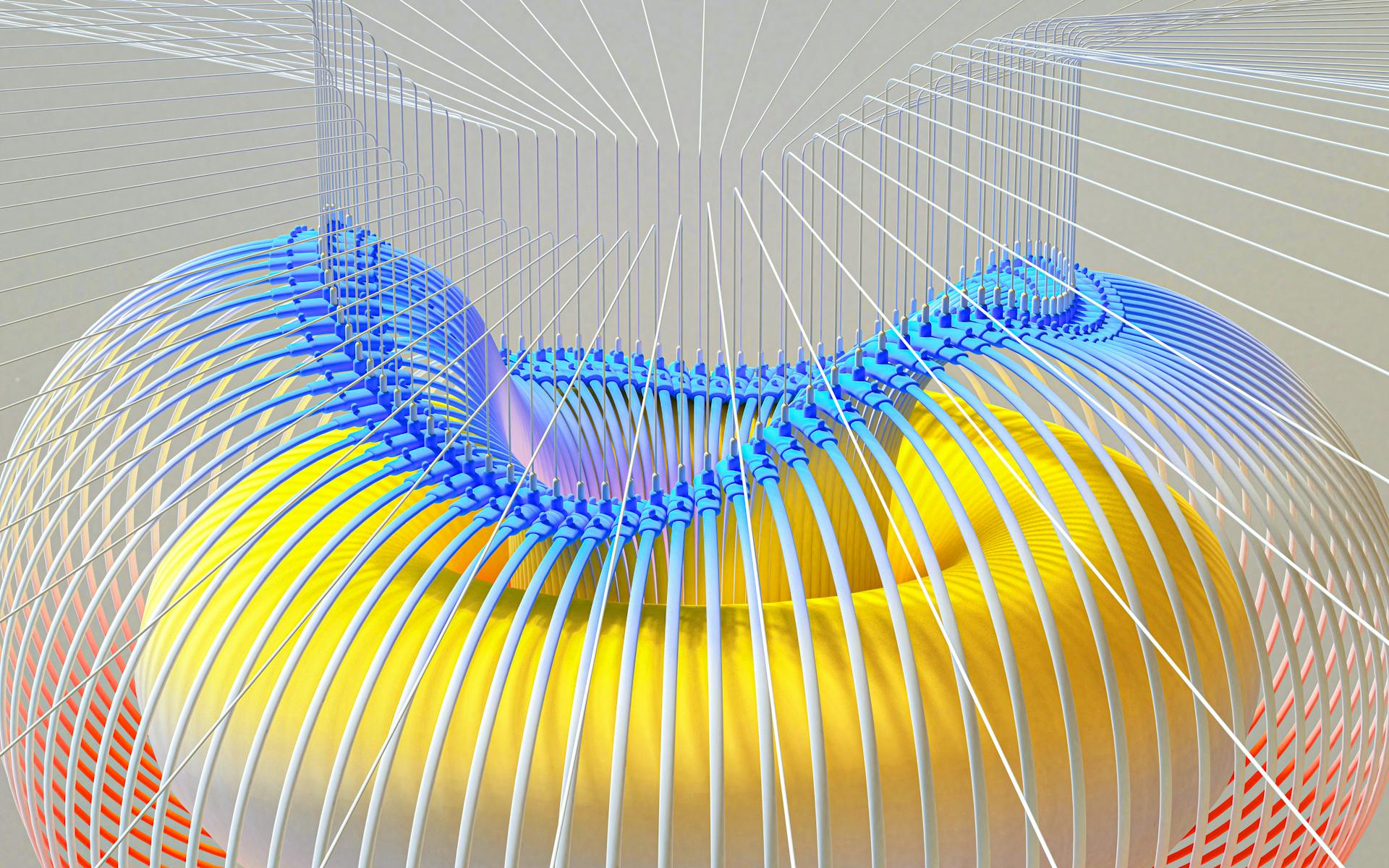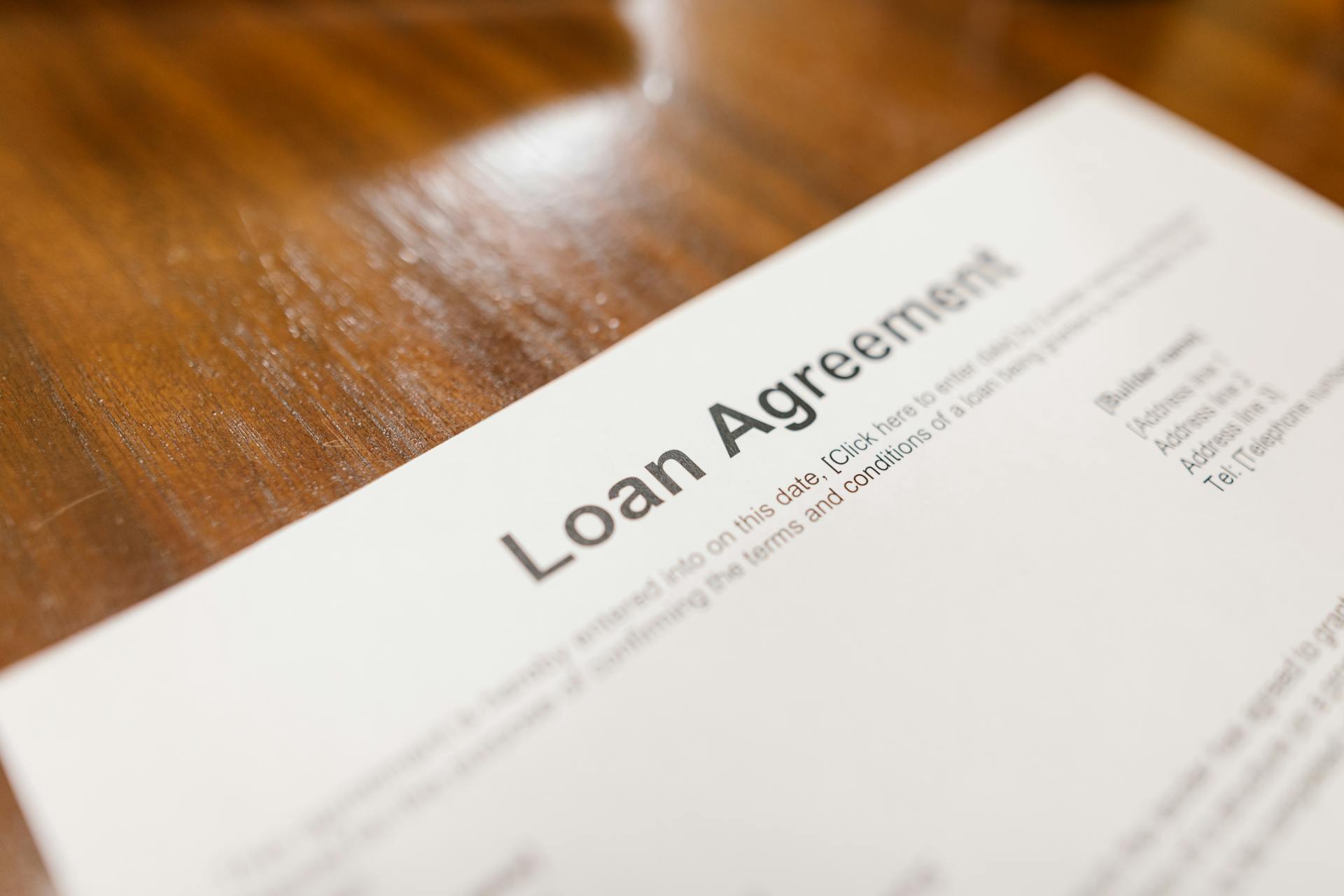
An NFT smart contract is a self-executing program that automates the transfer of ownership of a digital asset, such as art or collectibles. It's a crucial component of the NFT ecosystem.
These contracts are stored on a blockchain, which ensures their transparency and security. The contract's code is publicly visible, allowing anyone to review and audit its functionality.
The code within the contract determines the rules for creating, selling, and transferring NFTs. It also handles the payment and ownership transfer process, eliminating the need for intermediaries.
Smart contracts can be programmed to enforce specific rules and conditions, such as requiring a certain number of signatures or a specific amount of time before an NFT can be transferred. This level of customization provides flexibility and control for creators and owners.
Additional reading: Nft Blockchains
What Are NFT Smart Contracts?
NFT smart contracts are self-executing contracts with the rules written directly into lines of code. They're stored and replicated on a blockchain, which is a public, distributed ledger.

These contracts allow for the creation, sale, and ownership of unique digital assets like NFTs. They're programmable, meaning their behavior can be customized to fit the needs of the asset and its creators.
Smart contracts can automate various aspects of NFT transactions, such as payment and ownership transfer. They can also enforce rules and conditions set by the creator, ensuring the asset is used in a way that's consistent with its intended purpose.
The code is executed by the nodes on the blockchain network, ensuring the contract is enforced fairly and transparently. This decentralized approach eliminates the need for intermediaries and reduces the risk of disputes.
Smart contracts are immutable, meaning their code cannot be altered once it's deployed on the blockchain. This ensures the rules and conditions set by the creator remain consistent and unchanging.
Additional reading: Stacks Blockchain
How to Develop NFT Smart Contracts
To develop NFT smart contracts, you need to choose a blockchain, such as Ethereum or Binance Smart Chain. Familiarize yourself with the programming language suitable for your chosen blockchain, like Solidity for Ethereum.
Take a look at this: Blockchain LLC
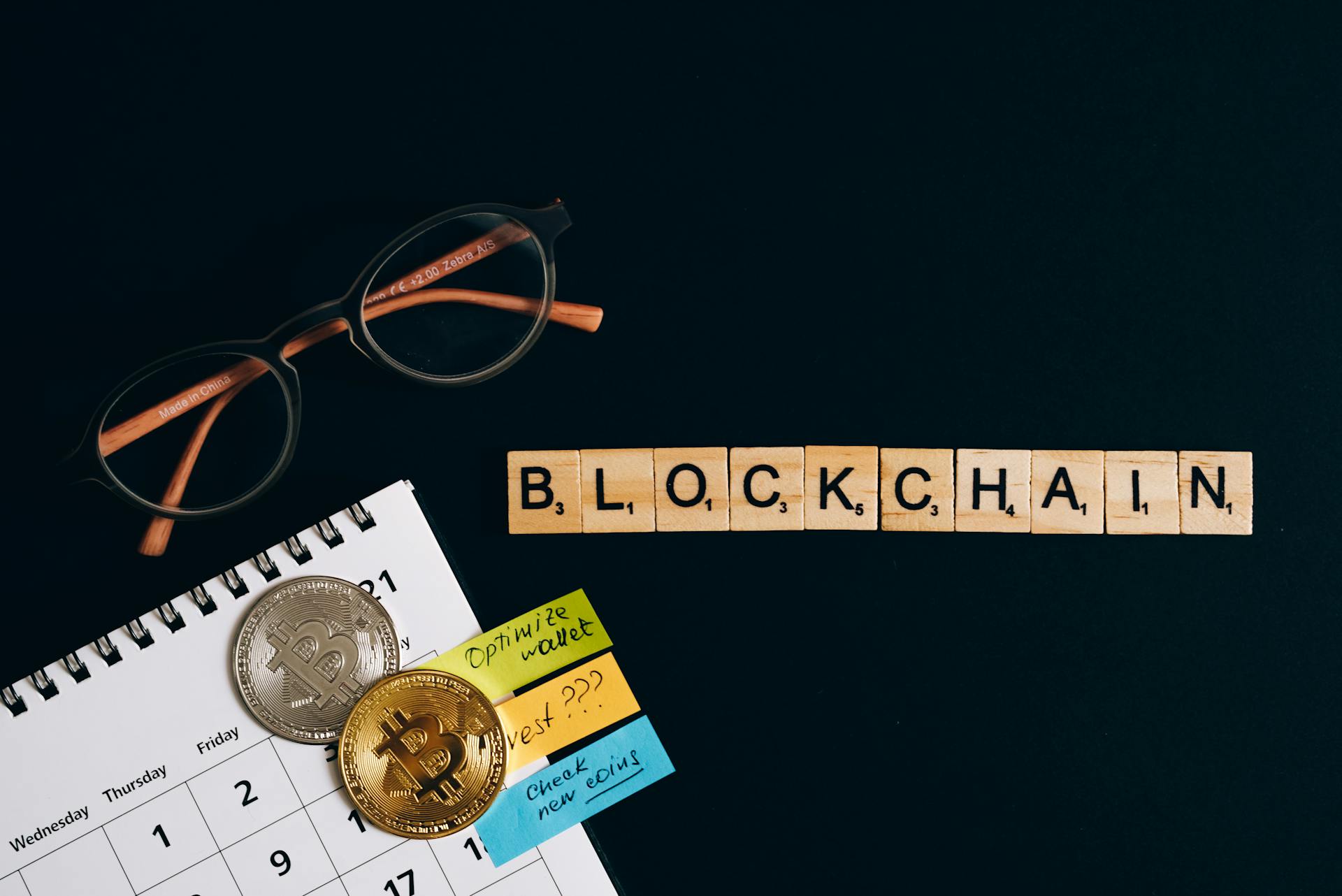
You can use development tools like Remix or Truffle to aid in creating and testing your contract. Before deploying on the mainnet, always deploy on a testnet to ensure everything functions as intended.
To write your smart contract NFT, you can use the underlying code to ensure seamless integration of blockchain technology and NFT transactions. Remember to code the contract for efficient and effective deployment and management.
Here are the steps to deploy an NFT smart contract:
- Compile the contract: Convert your written code into bytecode using tools like Truffle.
- Connect to a wallet: Tools like MetaMask can facilitate this.
- Choose the network: Select between the mainnet (real transactions) or testnet (for testing).
- Deploy: Use gas to initiate the deployment. Once validated, your contract goes live!
To develop an efficient NFT smart contract, you can leverage the technology to streamline business transactions and create secure and transparent transactions for digital assets. Implement its code to ensure seamless transactions.
Some popular tools for developing NFT smart contracts include Solidity, Remix, Truffle Suite, and MetaMask. These tools can help you create, test, and deploy your contract efficiently.
Here are some of the popular standards for creating NFTs on different blockchains:
By following these steps and using the right tools, you can develop and deploy an NFT smart contract that meets your business needs.
NFT Smart Contract Features
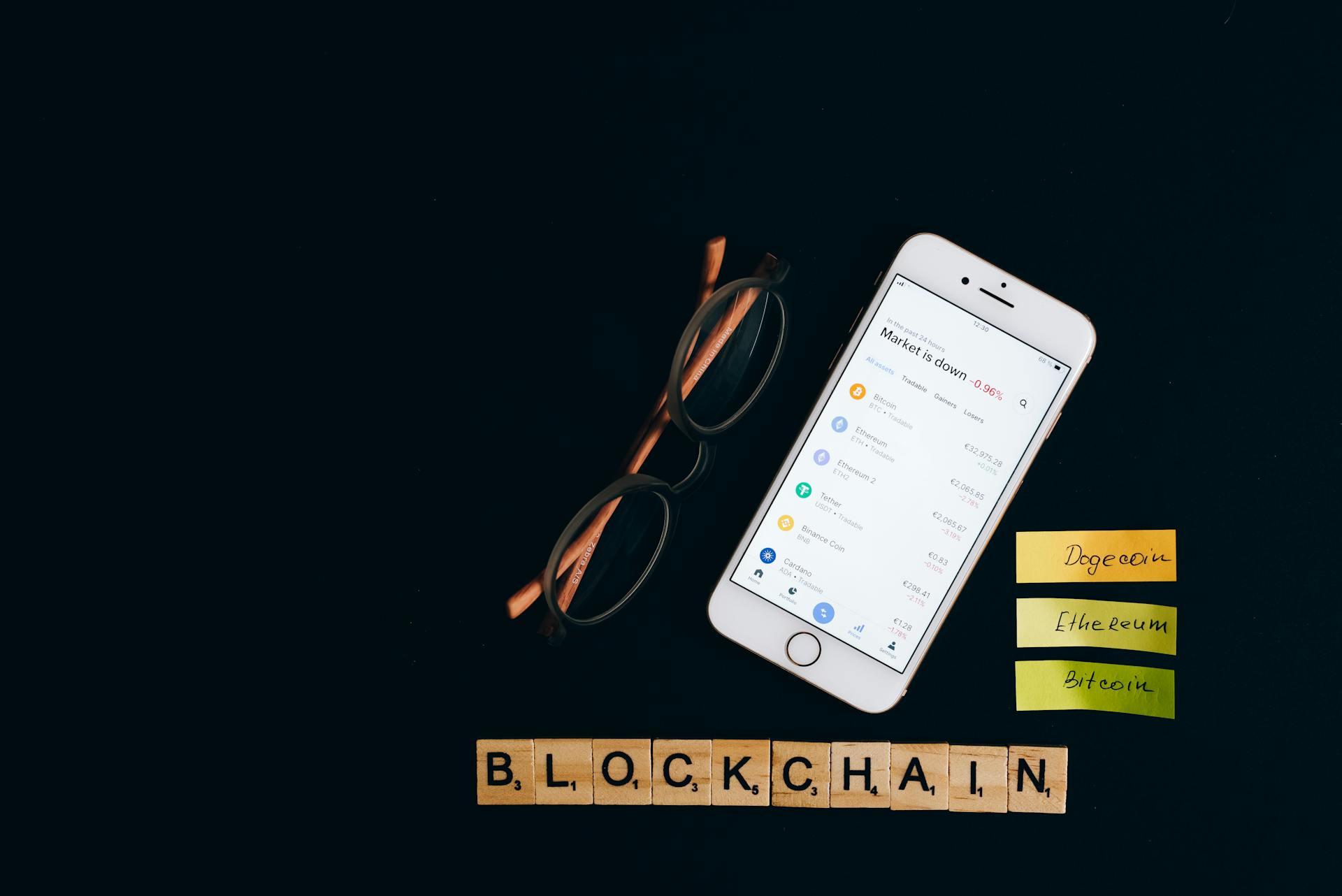
NFT smart contracts are built on the principles of immutability and decentralization, empowering creators and collectors alike with a secure and transparent platform for trading.
Immutability ensures that the terms of the contract are unchangeable, while decentralization eliminates the need for third parties, promoting trust and efficiency.
The backbone of NFT smart contracts is their ability to store metadata and artwork associated with digital assets, making it easy to verify ownership rights and royalties for artists.
Seamless integration into crypto wallets enables convenient transactions, while the power of blockchain technology eliminates the need for intermediaries.
NFT smart contracts can be programmed with additional functions, such as unlocking special content or access to events for NFT owners, creating a sense of exclusivity and ownership.
Some essential functions of NFT smart contracts include returning the wallet address that owns a specific token id (ownerOf) and the metadata uri for a specific token id (tokenURI).
Recommended read: Nft Art Finance
Here are some key functions that any NFT smart contract should implement:
- ownerOf - This function returns the wallet address that owns a specific token id.
- tokenURI - This function returns the metadata uri for a specific token id.
These functions are used by platforms like OpenSea to show who owns an NFT and what image to display for that NFT.
On a similar theme: People Buy Nft
Security and Trading
Smart contracts have revolutionized the world of NFT trading by simplifying and automating the entire process, from buying and selling to trading these unique digital assets.
They eliminate unnecessary fees and delays by eliminating the need for third-party intermediaries. This ensures a secure and efficient transfer of NFT ownership.
With digital contracts, manipulation and fraud in the marketplaces are prevented. This creates a seamless experience for both buyers and sellers.
NFT smart contracts authenticate digital assets, enforcing ownership and preventing unauthorized copying. This protects buyers and sellers in the marketplaces.
They provide a decentralized record of transactions, eliminating the risk of counterfeit assets. This ensures a trustworthy and empowering experience for both parties involved.
Expand your knowledge: Meme Coin Exchange
Developing Efficiency
To develop an efficient NFT smart contract, you can start by choosing the right tools for the job. Solidity is the main computer language used to create Ethereum blockchain smart contracts, and it's a great place to begin.
Remix is a Solidity-based smart contract development platform that offers a range of features, including testing and debugging tools. This can be a huge time-saver and help you catch errors early on.
Here are some other tools you can use to streamline your development process:
- Truffle Suite: A development environment that offers a range of tools for writing smart contracts with integrated testing.
- Ganache: Part of the Truffle Suite, it's a personal blockchain for developing applications and executing tests.
- Hardhat: A development environment that provides a framework for compiling, deploying, testing, and debugging Ethereum software.
By using these tools, you can focus on writing efficient code and creating a secure and transparent NFT smart contract.
Create Your App
To create your app, you'll need to generate an API key, which will allow your app to interact smoothly with blockchain technology and NFT smart contracts.
Designing a user-friendly app is crucial to ensure NFT transactions are easy and efficient for your users. By leveraging third-party tools and services, you can develop and customize your app to meet your unique requirements.
You can utilize resources such as testnets like Ropsten or Rinkeby to gain valuable hands-on experience in creating an app that integrates with smart contracts and NFTs.
To create NFTs, you'll need to mint them through a process that transforms digital media into cryptographic assets on a blockchain.
Broaden your view: What Are Smart Contracts in Blockchain
Developing Efficiency
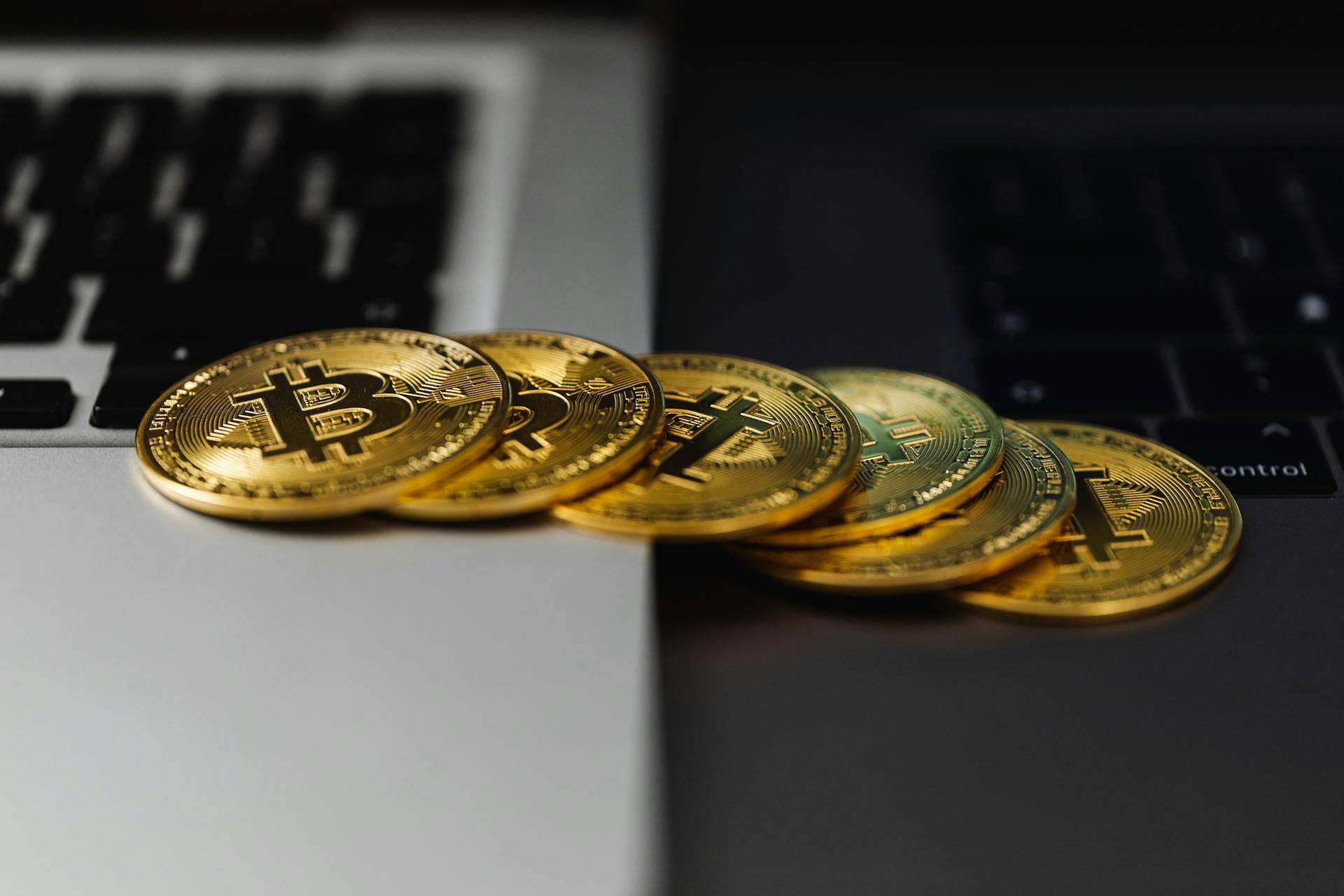
To develop an efficient NFT smart contract, you can leverage tools like Solidity, Remix, and Truffle Suite. Solidity is the main computer language used to create Ethereum blockchain smart contracts.
Using a development environment like Truffle Suite can offer a range of tools for writing smart contracts with integrated testing. This can help streamline the development process.
Ganache, part of the Truffle Suite, is a personal blockchain for developing applications and executing tests. This can be especially useful for testing and debugging purposes.
OpenZeppelin is a library of reusable smart contract components that can enhance security and development speed. This can be a game-changer for developers looking to create efficient smart contracts.
To deploy contracts onto the Ethereum blockchain, you can use MetaMask, a crypto wallet and gateway. This can help ensure seamless transactions.
For verifying and publishing smart contracts, you can use Etherscan, a comprehensive Ethereum blockchain explorer. This can provide a clear and transparent view of your smart contract's performance.
Here are some tools you can use to develop an efficient NFT smart contract:
- Solidity
- Remix
- Truffle Suite
- Ganache
- OpenZeppelin
- MetaMask
- Etherscan
- Hardhat
Total Content Function
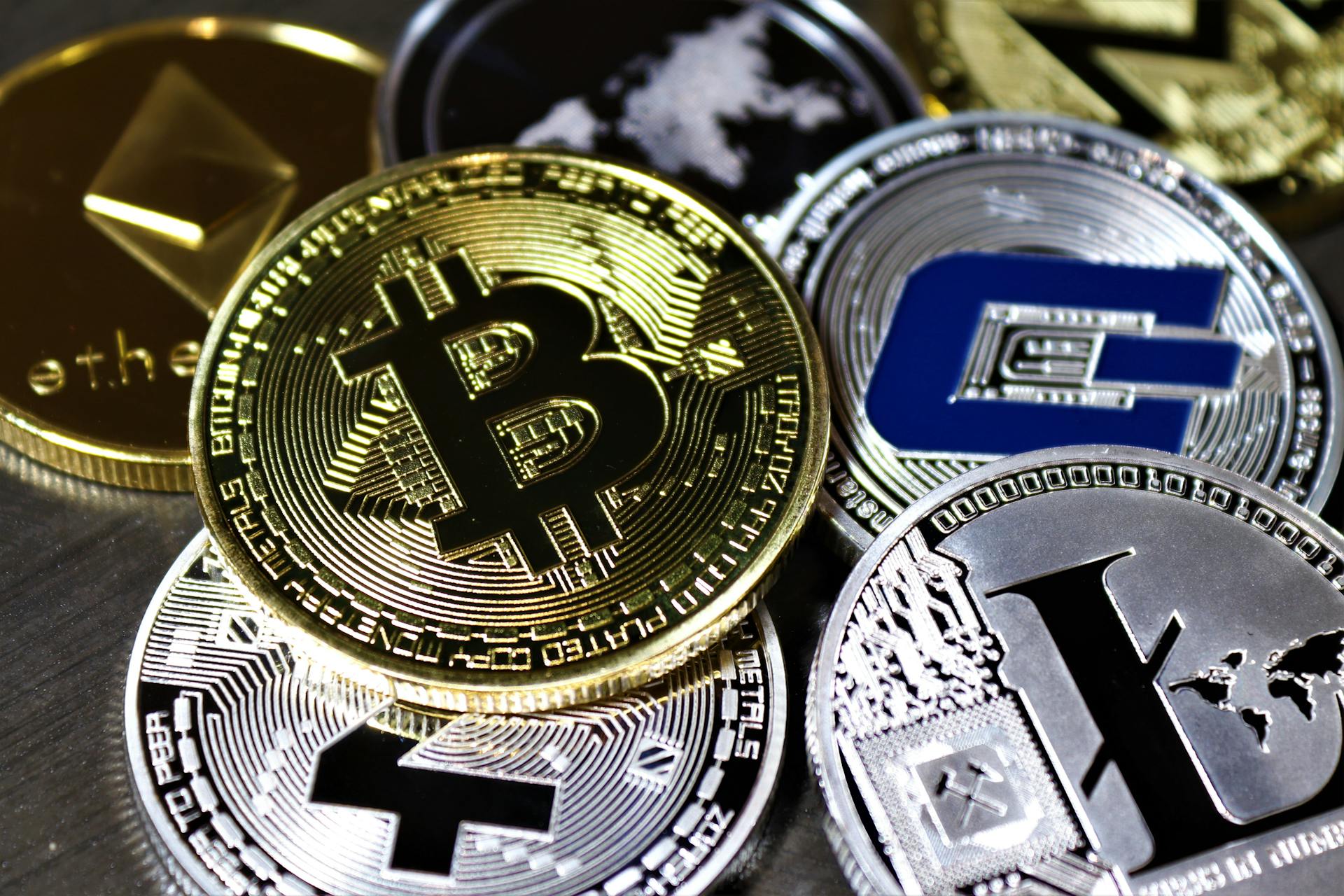
The Total Content Function is a game-changer for NFT creators and developers. It returns the current count for the NFTs, representing the total number of NFTs minted using this contract. This function is a crucial tool for tracking and managing NFTs. NFTs have quickly gained traction with the rise of cryptocurrencies, and this function helps developers stay on top of their digital creations. By using the Total Content Function, developers can easily keep track of their NFTs and make informed decisions about their digital ventures.
You might enjoy: Chamber of Digital Commerce
Deploying and Integrating
Deploying and Integrating your NFT smart contract is a crucial step in bringing your digital art to life.
To deploy an NFT smart contract, you'll need to compile your contract code into bytecode using tools like Truffle. This process converts your written code into a format that can be executed on the blockchain.
Connecting your wallet to the contract is the next step, and tools like MetaMask can make this process seamless. By establishing a secure connection, you can ensure that your transactions are reliable and efficient.
Here's an interesting read: How to Process Credit Card Payments with Merchant Id
You'll also need to choose the network on which to deploy your contract - either the mainnet for real transactions or the testnet for testing purposes.
Here's a step-by-step guide to deploying your NFT smart contract:
- Compile the Contract: Convert your written code into bytecode using tools like Truffle.
- Connect to a Wallet: Tools like MetaMask can facilitate this.
- Choose the Network: Select between the mainnet (real transactions) or testnet (for testing).
- Deploy: Use gas to initiate the deployment. Once validated, your contract goes live!
Integrating third-party tools like MetaMask and Alchemy can also help streamline your deployment process. By connecting these tools to your project, you can ensure secure and efficient transactions.
To connect MetaMask and Alchemy to your project, follow these simple steps:
- Establish a secure connection between MetaMask, Alchemy, and your smart contract.
- Ensure seamless deployment and management of your contract.
- Take control of your project's security and functionality with the help of these third-party tools.
By following these steps and integrating the right tools, you can unlock the full potential of your NFT smart contract and bring your digital art to life.
NFT Smart Contract Properties
In an NFT smart contract, properties like _tokenIds store token ids for Non-Fungible Tokens, which can only increase in number.
_tokenIds uses a "mapping" approach, similar to labeling drawers, to locate NFT data in the Contents map.
This mapping function takes a large number and maps it to an item, using token ids as the key.
The price of an NFT in Wei is about 0.005 ETH, which is a huge number due to integer limitations.
To work around decimal values, huge numbers like uint256 are used to represent values.
You might enjoy: Security Token Offering
Best Practices and Resources
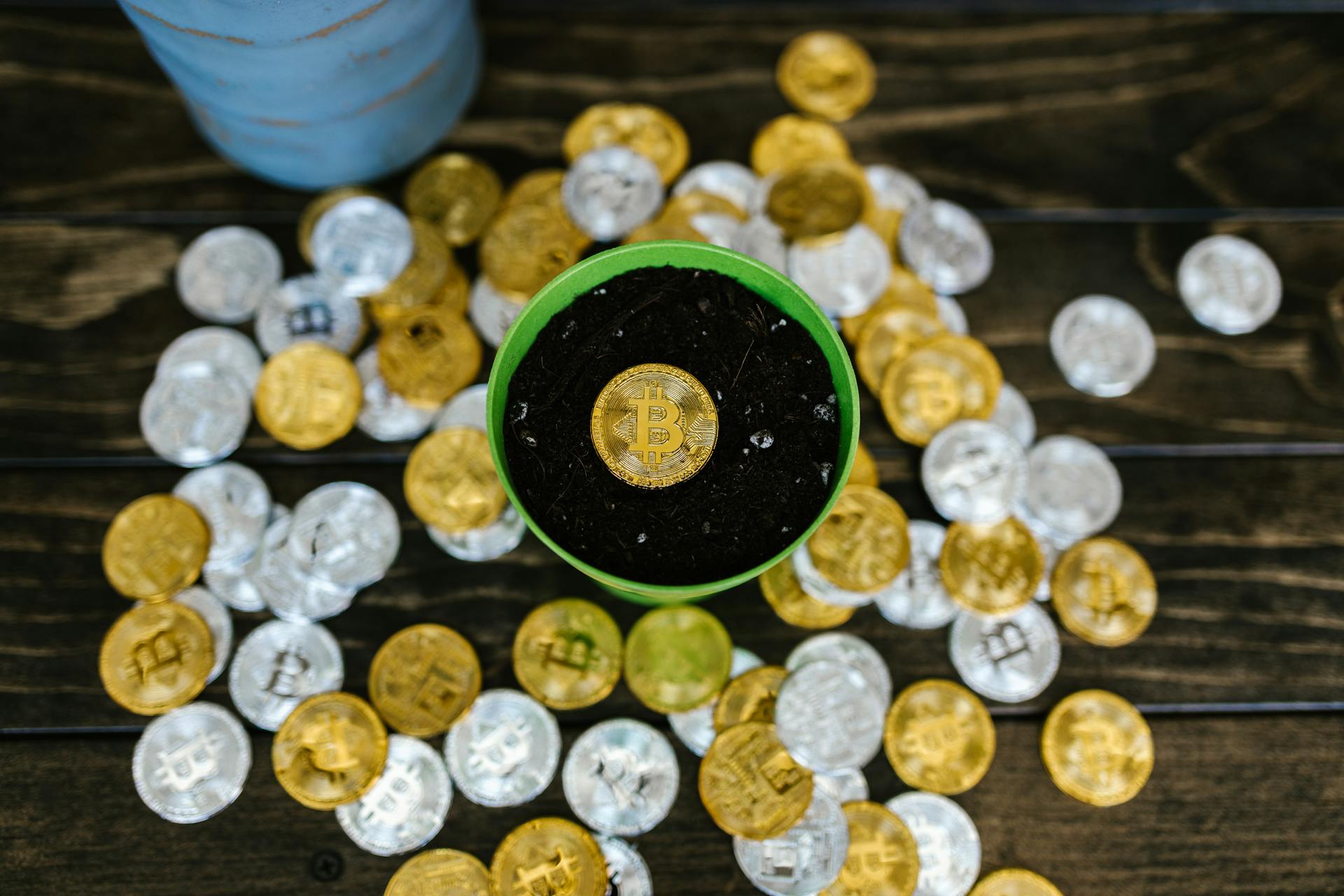
When building an NFT smart contract, it's essential to follow best practices to ensure a smooth and secure experience.
Test your contract thoroughly before deploying it, as seen in the example of the "ERC-721" contract, which was tested extensively before its deployment.
For resources, consider using platforms like OpenZeppelin, which provides pre-built, audited smart contract templates, including the ERC-721 contract.
These templates can save you time and effort, and are a great starting point for your NFT project.
Discover more: Co-founder Animoca Brands - Yat Siu
Recommended by LinkedIn
Recommended by LinkedIn is a great resource for learning about NFTs. The current token id is obtained by hashing a string of the token id, the sender's address, the block difficulty, and the time of the transaction using keccak256.
This process generates a pseudo-random hash. The abi.encodePacked function combines all the pieces of information into one big string.
It's essential to check that the transfer will succeed, which is why Safe is used. It ensures that the transfer will not exceed the token id.
For more insights, see: Will Paying off Delinquent Debt Improve My Credit
Successful Projects

CryptoPunks set the stage for all future NFTs by being one of the first projects on the Ethereum blockchain, with 10,000 unique 24x24 pixel art characters stored directly on the blockchain.
Decentraland's underlying smart contract ensures that each piece of virtual real estate is unique, allowing owners to have full control over the content and even earn revenue through advertising or charging visitors.
The ERC-721 standard, established by CryptoPunks' smart contract, is a widely accepted NFT standard.
NBA Top Shot's smart contract guarantees authenticity and scarcity for each "moment" sold, making it a great example of how smart contracts can be used to ensure the value of digital collectibles.
The Bored Ape Yacht Club (BAYC) uses a robust smart contract to govern the uniqueness of each ape and the perks provided to holders, creating a sense of community and exclusivity among owners.
These successful projects demonstrate the potential of NFT smart contracts to create immersive virtual economies and provide creators with new ways to monetize their work.
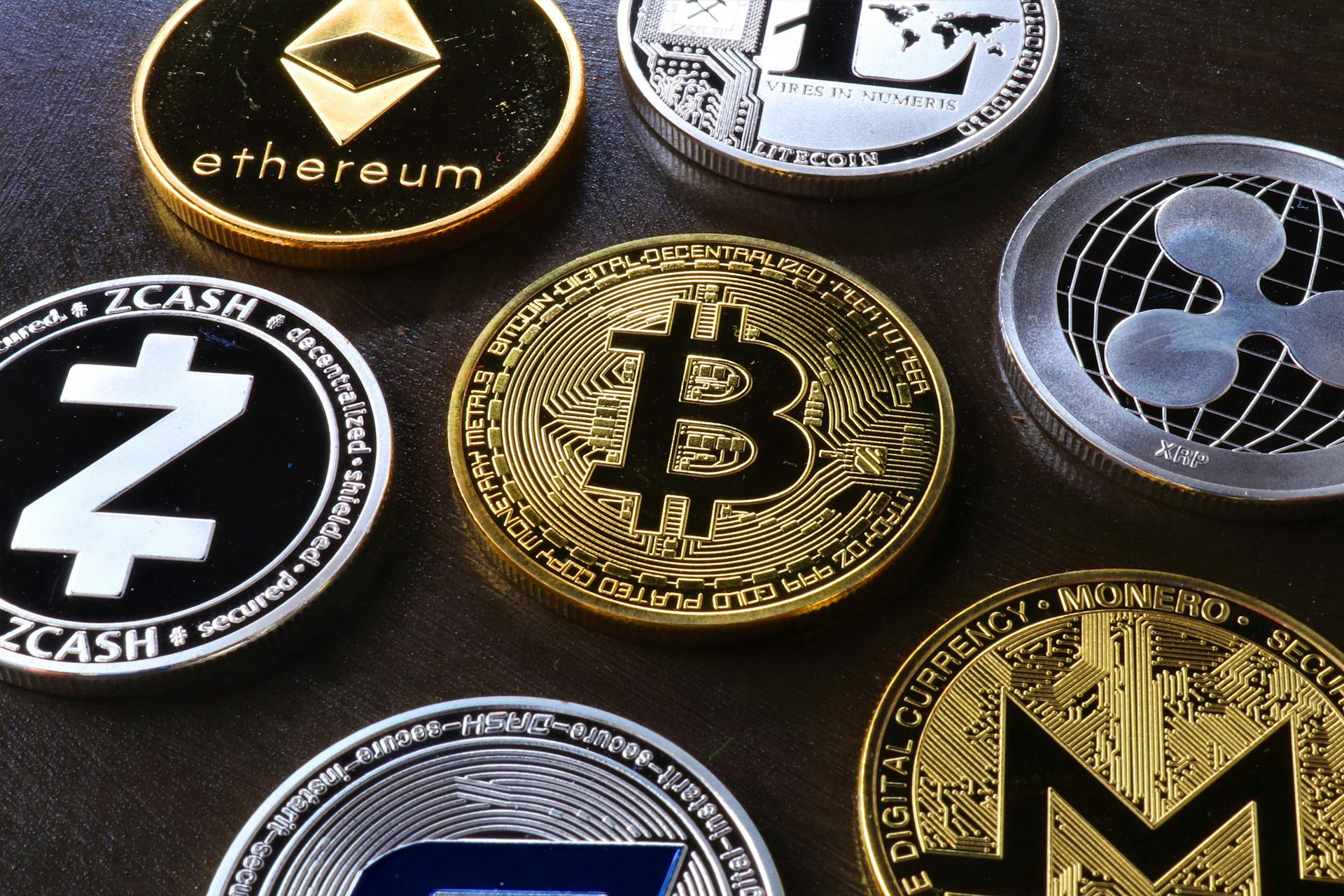
Here are some key takeaways from these successful projects:
- CryptoPunks established the ERC-721 standard, a widely accepted NFT standard.
- Decentraland allows users to purchase, develop, and sell parcels of virtual real estate.
- NBA Top Shot guarantees authenticity and scarcity for each "moment" sold.
- BAYC uses a robust smart contract to govern the uniqueness of each ape and the perks provided to holders.
Understanding NFT Smart Contracts
An NFT smart contract is essentially a program that executes a task after fulfilling a pre-determined condition, eliminating the need for a third party or middleman.
A smart contract is a program that executes a task after fulfilling a pre-determined condition, eliminating the need for a third party or middleman. It completes the assigned task without any human intervention, preventing human errors, saving time, and reducing costs compared to traditional contracts.
To understand NFT smart contracts, you first need to understand NFTs and smart contracts separately. An NFT is a digital copy of unique assets that you cannot interchange with another NFT.
An NFT is a digital copy of unique assets that you cannot interchange with another NFT. These tokens support file formats, including jpg, png, gif, MP3, MP4, etc. Individuals can buy or sell NFTs in the NFT marketplace.
Here's an interesting read: Does a Toddler Need an Nft?
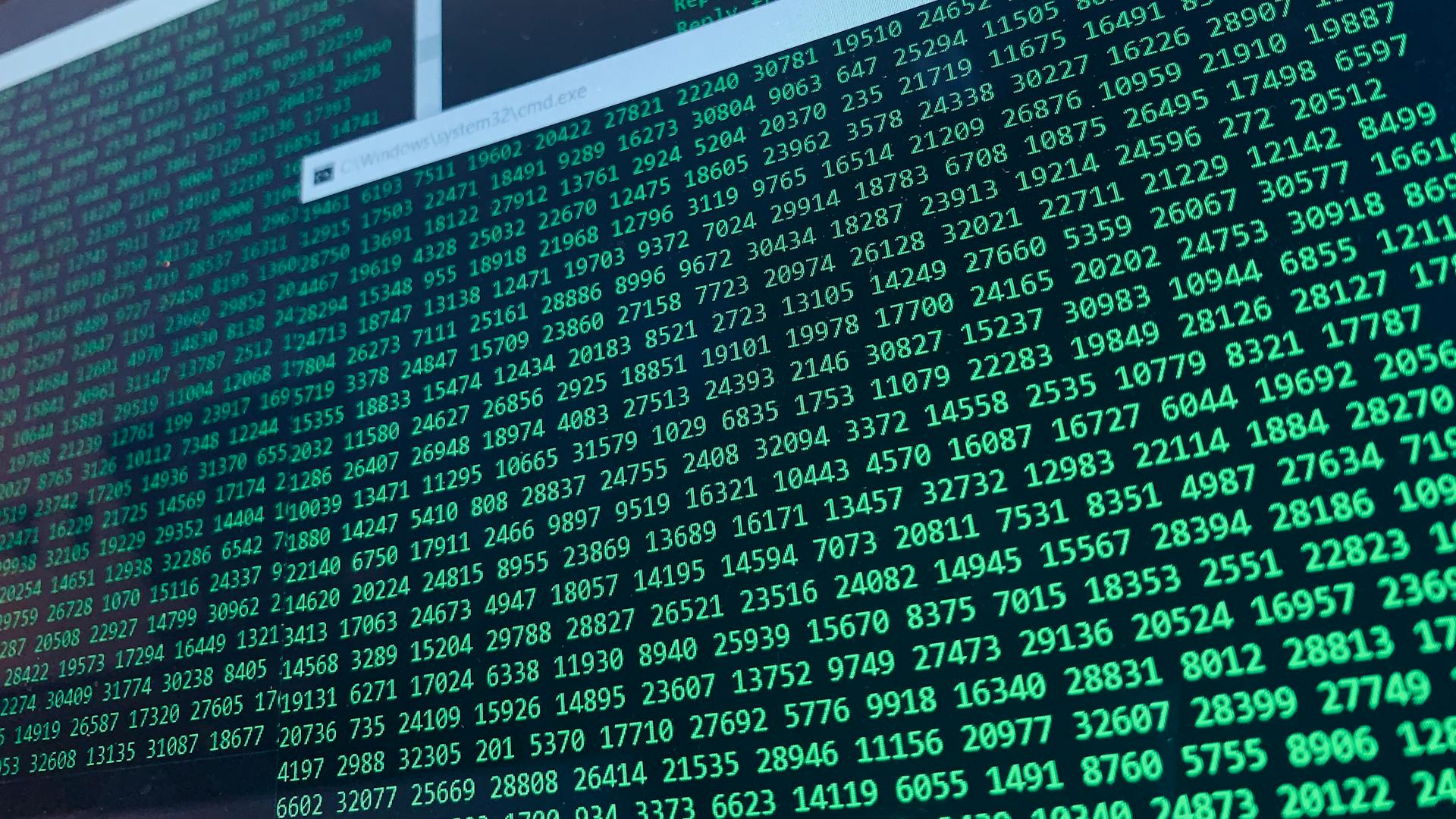
A smart contract can capture various things, including the fundamental rights traded. Most people mistakenly think that if you own an asset, its copyright belongs to you, too. You need to realize that copyright and ownership are two distinct concepts.
The NFT marketplace smart contract highlights the specific rights of the buyer, stating that digital collectibles are separate from art. The license approves the creation of products that integrate the art, but these terms may differ from each transaction.
Immutability and decentralization play a crucial role in a NFT smart contract. These features ensure that contract terms and transactions cannot be altered, protecting against manipulation and fraud.
Immutability and decentralization help prevent plagiarism and counterfeiting in digital art and collectibles, providing a safeguard for artists and creators. With the help of smart contracts, NFTs empower individuals to engage in secure and transparent transactions, revolutionizing the digital world.
To read an NFT smart contract, you can follow these steps:
- Access a Blockchain Explorer: Platforms like Etherscan (for Ethereum) or BscScan (for Binance Smart Chain) are ideal.
- Search the Contract Address: Input the contract's address into the explorer's search bar.
- Navigate to the 'Code' Tab: This displays the contract's source code. Some platforms even allow for easier reading by segregating functions and terms.
Creating
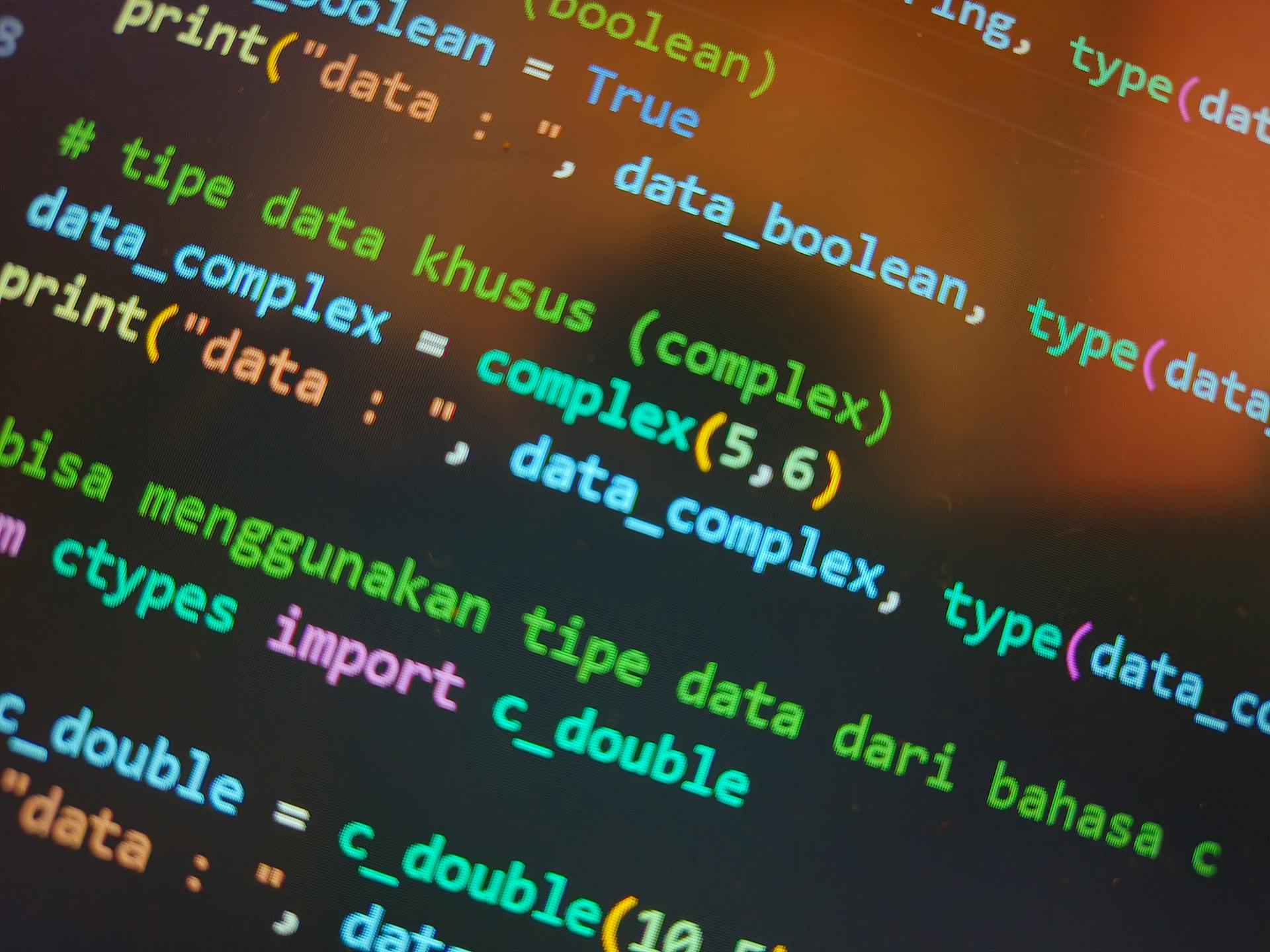
Creating an NFT smart contract is a code-based and self-executing system that developers use to mint NFTs by transforming digital media into cryptographic assets on a blockchain.
You can create NFTs through the minting process, which involves transforming pictures, movies, sound snippets, and other digital media into cryptographic assets on a blockchain.
The smart contract code determines the characteristics of your crypto assets, and when you sell your NFTs, the smart contract will automatically transfer the ownership rights to a purchaser.
To create NFTs, you can leverage the power of third-party tools and services that are specifically designed for smart contract and NFT deployment.
Developers create NFTs on various smart contract blockchains like Tezos, EOS, and TRON, which have NFT creation tools.
The most commonly used standard for creating NFTs on Ethereum is ERC 721, which lets a creator use special crypto assets through its contract.
ERC 721 tokens cannot be split or swapped with another ERC 721 token, making it a unique standard for NFT development.
Another smart contract standard for NFT development is ERC 1155, which lets developers create semi-fungible tokens specifically for the NFT gaming sector.
For more insights, see: How to Create a Smart Contract
Sources
- https://tokenminds.co/blog/blockchain-development/nft-smart-contract
- https://imiblockchain.com/nft-smart-contract/
- https://www.linkedin.com/pulse/nft-minting-smart-contract-explained-line-matthew-willox
- https://www.721.so/guide/nfts/smart_contracts
- https://medium.com/@arslansiddiquiUSA/nft-smart-contracts-applications-you-must-know-0dc622c501f7
Featured Images: pexels.com

